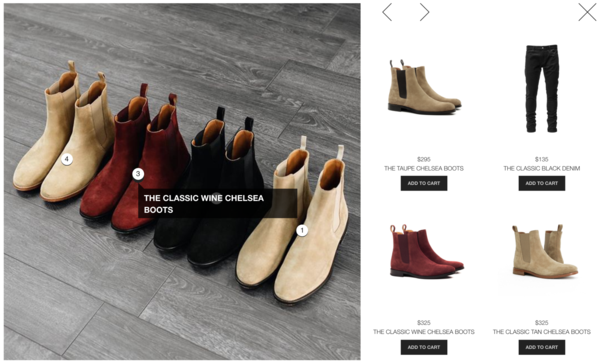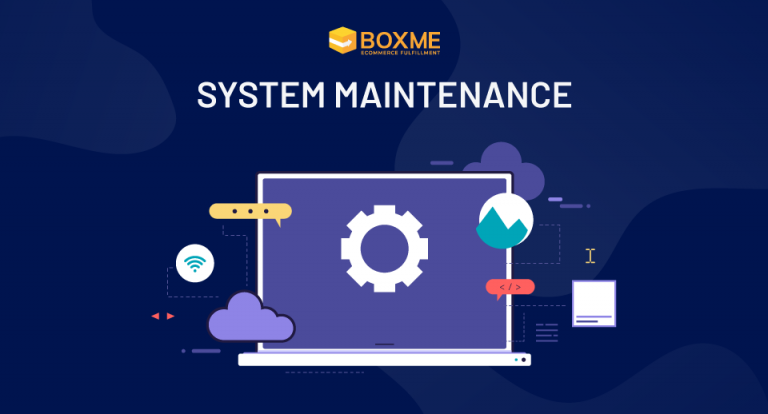The term diversification is often used as part of a stock market strategy – a specific tactic that involves buying multiple types of stocks to lessen the risk of losing your investment if one of them doesn’t perform well.
But the strategy is in fact just as effective for importers and exporters. Below are 3 ways you can use diversification to your advantage.
Spice Up Your Inventory
Arguably the fastest and easiest way to diversify your business is to stick with what you know, but branch out into a few new “flavors”.
For example, in India, textile exporters have had a history of selling knitwear and woolens. However, with increasing pressure from competitors, as well as less demand from the US and Europe, they found themselves with fewer and fewer textile sales. So the government launched an effort to encourage Indian textile manufacturers to expand their production into trousers, kids wear, pullovers and jackets.

(Source: InvestForYourself)
If that type of drastic change sounds daunting to you, don’t be discouraged. Diversification can still be achieved in much more simpler ways, like adding a new color or size.
- If you’re an exporter: Talk directly to your buyers to see if they have any requests before committing to produce a specific variety. After all, the goal here is to minimize risk… not to take on another production line that flops.
- If you’re an importer: Consider adding on a few extra varieties of the product you usually order. If no other options are available from the manufacturer’s catalogue, ask if they are willing to modify their products and do a custom order for you. While it may bother them in the short run, it could lead to more business for both sides in the long run. If they are not able to diversify their product offerings for you, move on to the next two suggestions.
Try Something New
For most people, trying something new can be scary. Importing or exporting an entirely different, unrelated product can feel like a risk, and it is! But the point here is that taking calculated small risks (like diversifying your product offerings) could potentially save you from one big catastrophic risk down the road.
Case in point is the country of Costa Rica, which used to depend heavily on exports of coffee and bananas. Because just two products made up 90% of the country’s export sales, it was particularly vulnerable to the effects of any type of natural disaster, infestation or market fluctuation.
Thankfully, the government worked to mitigate risk by pushing for increased diversification. Now, the country’s export market is comprised of a much more balanced blend of offerings, ranging from medical equipment, pineapples and fruit juices to prepared foods. This has somewhat shielded the country from the particularly volatile coffee prices in recent years.

(Source: MarriottTraveler)
Keep in mind that when it comes to putting this tactic to use in your own business, you don’t have to turn 180 degrees and start buying or selling a product that has absolutely nothing to do with your current offering. Instead, focus on products that could be bought by the same end user.
For example, if you deal in footwear, think about adding a complementary product like shoe polish. Or how about adding ceramic mugs to your gourmet tea orders?
In addition to diversifying your trade portfolio, these types of product pairings act like a bridge to help you expand into new territories in the unfortunate event of hardship.
 (Source: Shopify)
(Source: Shopify)
Take the tea case for example. What if new tea farming regulations or tariffs made it suddenly impossible for you to trade the precious leaves? If you had diversified, you could continue to sell ceramic mugs (hopefully by then you’ve managed to turn this into a somewhat profitable venture), perhaps adding silver teaspoons and other accessories into the mix.
Since they relate to the same end user, you have better chances of being able to trade the new products with your existing contacts.
Trade Around
Another way to diversify your trade efforts is to branch out and work with a variety of trading partners from different countries.
While this may add a bit more logistical nuisance, it protects you against lack of inventory or sales due to politically-motivated regulations or tariffs that could suddenly make your usual routine impossible. And it gives you active control over your business, because should your existing partner suddenly go bankrupt, your operation can continue without hardship.

(Source: DesignIntegration)
If you’re not ready to dive deep into this one just yet, it’s a good idea to at least test the waters and start developing relationships with partners you can trust in case troubles arise. Thankfully, meeting trade partners has never been easier. Check out our solution at Boxme to get advices from established legal presence from all over Southeast Asia.
–> Tramping down import/export barriers for a smooth business expansion.
SUMMARY
Nothing in life is without risk. But with a little diversification, you can build yourself a safety net that increases your chances of long-term success.
[vc_separator color=”orange” align=”align_left” style=”dashed”][vc_column_text]BoxMe is the premier cross-border e-Commerce fulfillment network in South East Asia, enabling world-wide merchants to sell online into this region without needing to establish local presence. We are able to deliver our services by aggregating and operating an one-stop value chain of logistic professions including: International shipping, customs clearance, warehousing, connection to local marketplaces, pick and pack, last mile delivery, local payment collection and oversea remittance.
If you have any question about Boxme Asia or how we can support your business, please contact us directly by referring to our hotline. We are glad to be of service![/vc_column_text]
[vc_raw_js]JTNDJTIxLS1IdWJTcG90JTIwQ2FsbC10by1BY3Rpb24lMjBDb2RlJTIwLS0lM0UlM0NzcGFuJTIwY2xhc3MlM0QlMjJocy1jdGEtd3JhcHBlciUyMiUyMGlkJTNEJTIyaHMtY3RhLXdyYXBwZXItYTkxNTk3YzUtMzU5ZC00ZjcxLTlhMTctMDJiNzUwMWVmYWRjJTIyJTNFJTNDc3BhbiUyMGNsYXNzJTNEJTIyaHMtY3RhLW5vZGUlMjBocy1jdGEtYTkxNTk3YzUtMzU5ZC00ZjcxLTlhMTctMDJiNzUwMWVmYWRjJTIyJTIwaWQlM0QlMjJocy1jdGEtYTkxNTk3YzUtMzU5ZC00ZjcxLTlhMTctMDJiNzUwMWVmYWRjJTIyJTNFJTNDJTIxLS0lNUJpZiUyMGx0ZSUyMElFJTIwOCU1RCUzRSUzQ2RpdiUyMGlkJTNEJTIyaHMtY3RhLWllLWVsZW1lbnQlMjIlM0UlM0MlMkZkaXYlM0UlM0MlMjElNUJlbmRpZiU1RC0tJTNFJTNDYSUyMGhyZWYlM0QlMjJodHRwcyUzQSUyRiUyRmN0YS1yZWRpcmVjdC5odWJzcG90LmNvbSUyRmN0YSUyRnJlZGlyZWN0JTJGMjE0MTUyOCUyRmE5MTU5N2M1LTM1OWQtNGY3MS05YTE3LTAyYjc1MDFlZmFkYyUyMiUyMCUzRSUzQ2ltZyUyMGNsYXNzJTNEJTIyaHMtY3RhLWltZyUyMiUyMGlkJTNEJTIyaHMtY3RhLWltZy1hOTE1OTdjNS0zNTlkLTRmNzEtOWExNy0wMmI3NTAxZWZhZGMlMjIlMjBzdHlsZSUzRCUyMmJvcmRlci13aWR0aCUzQTBweCUzQiUyMiUyMHNyYyUzRCUyMmh0dHBzJTNBJTJGJTJGbm8tY2FjaGUuaHVic3BvdC5jb20lMkZjdGElMkZkZWZhdWx0JTJGMjE0MTUyOCUyRmE5MTU5N2M1LTM1OWQtNGY3MS05YTE3LTAyYjc1MDFlZmFkYy5wbmclMjIlMjAlMjBhbHQlM0QlMjJMZXZlcmFnZSUyME91ciUyMFNvbHV0aW9uJTIyJTJGJTNFJTNDJTJGYSUzRSUzQyUyRnNwYW4lM0UlM0NzY3JpcHQlMjBjaGFyc2V0JTNEJTIydXRmLTglMjIlMjBzcmMlM0QlMjJodHRwcyUzQSUyRiUyRmpzLmhzY3RhLm5ldCUyRmN0YSUyRmN1cnJlbnQuanMlMjIlM0UlM0MlMkZzY3JpcHQlM0UlM0NzY3JpcHQlMjB0eXBlJTNEJTIydGV4dCUyRmphdmFzY3JpcHQlMjIlM0UlMjBoYnNwdC5jdGEubG9hZCUyODIxNDE1MjglMkMlMjAlMjdhOTE1OTdjNS0zNTlkLTRmNzEtOWExNy0wMmI3NTAxZWZhZGMlMjclMkMlMjAlN0IlN0QlMjklM0IlMjAlM0MlMkZzY3JpcHQlM0UlM0MlMkZzcGFuJTNFJTNDJTIxLS0lMjBlbmQlMjBIdWJTcG90JTIwQ2FsbC10by1BY3Rpb24lMjBDb2RlJTIwLS0lM0U=[/vc_raw_js][vc_row][vc_column][vc_column_text][/vc_column_text][/vc_column]










